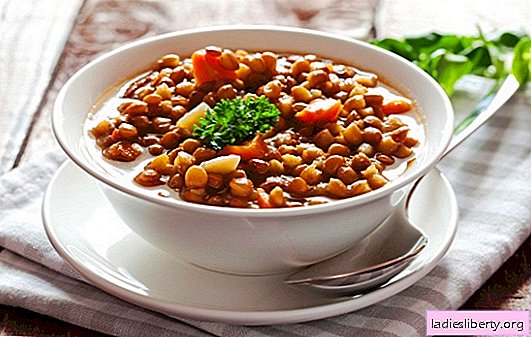
Inflammation of the cervical canal (endocervicitis) - a pathology that occurs in women more often than others. This is due to the anatomical structure and topography of the cervical canal. It connects the vagina to the uterine cavity. Usually, inflammation occurs in the vagina, then passes to the cervix - colpitis develops.
Therefore, if you fail to make a diagnosis in time and immediately cure it, the disease will turn into a latent sluggish form. This, in turn, is fraught with serious complications. Their treatment will take a lot of time and it is not at all a fact that the treatment will be successful.
In the case of timely diagnosis and treatment of unpleasant complications will not occur.
Cervical Canal Inflammation - Causes
The main provoking factors leading to inflammation of the cervical canal include:
- Injury to the cervix (deformation that has arisen for any reason)
- reduced immunity
- menstruation
- stress
The causes of inflammation of the cervical canal are divided into infectious and non-infectious.
The most common:
• sexually transmitted pathogens (Trichomonas, ureaplasma, chlamydia, etc.)
• non-specific flora (E. coli, streptococcus, fungi of the genus Candida, etc.)
• action of external aggressive factors (chemotherapy, strong chemical solutions for douching, radiation therapy)
• premenopause: hormonal changes dramatically
They cause an inflammatory process in the vagina, which passes to the cervical canal.
Normally, the uterine cavity is protected by a mucous plug, which “closes” the cervical canal and is a reliable obstacle for pathogenic microorganisms. At the time of medical and diagnostic manipulations, the tube may break, its physical and chemical composition changes. Through the cervical canal, infection opens into the uterus, thereby causing inflammation and endometritis. In the future, this may lead to infertility, although not necessarily. Basically, this happens against a background of reduced immunity and constant stress.
The entry gates for infection are not only the genital tract, but also the digestive, circulatory and lymphatic systems.
Non-infectious causes of cervical inflammation include external exposure and congenital anatomical abnormalities. However, these are quite rare pathologies.
Additional risks: active sexual activity that has begun early, childbirth at a young age (up to 16 years), different sexual partners, allergies to spermicides and latex, certain hormonal drugs, smoking.
Cervical Canal Inflammation - Symptoms
Symptoms of inflammation of the cervical canal are the same as with other inflammatory diseases of the female reproductive system. Concerned, as with almost all inflammatory diseases of the genital tract, itching and burning, soreness and discomfort of a constant nature in the lower abdomen, there may be discomfort during intercourse and spotting after it, anorgasmia.
The discharge during inflammation is plentiful, but can be insignificant, with an unpleasant odor, of a foamy purulent character. Acute inflammation of the cervical canal is an inflammation that lasts up to six weeks.
Symptoms of acute inflammation of the cervical canal are diverse and manifest actively: profuse purulent discharge from the vagina, moderately elevated temperature, pain in the lower abdomen.
If left untreated, the acute period will turn into a chronic course.
Chronic inflammation of the cervical canal may not manifest itself clinically. Most often, there are no symptoms at all. The diagnosis is made when contacting a doctor for other reasons as a find during examination. Accordingly, there may be no complaints, but this does not mean that there is no illness. Its course became sluggish, the body adapted to infection.
If urgent treatment is not started, the inflammatory process spreads and serious complications arise in the future.
In many cases, inflammation of the cervical canal is asymptomatic from the very beginning and does not affect overall well-being.
Therefore, the diagnosis is difficult. Symptoms of cervical canal inflammation depend on the characteristics of the body and the pathogen identified.
To establish a diagnosis, in addition to the usual examination by mirrors, palpation is necessary:
- smear for cytograms (study of epithelial cells - the degree of inflammation is determined),
- bacteriological culture (a specific pathogen is detected),
- a blood test for STIs - sexually transmitted infections (primarily for syphilis and HIV).
Often colposcopy is often performed (using a colposcope, signs of inflammation are determined).
After the examination and determination of the infectious agent, the diagnosis is specified and treatment is prescribed.
Cervical Canal Inflammation - Treatment
Treatment of inflammation of the cervical canal depends on the degree of inflammation and the pathogen. The goals of treatment:
- elimination of infection
- cessation of inflammation
- elimination of symptoms
- tissue repair
- exclusion of relapses
The appointment of antibiotics, antiviral and other drugs depends on the pathogen identified, its sensitivity to a particular drug, the stage of the inflammatory process.
Treatment of chlamydial inflammation of the cervical canal: tetracyclines (Doxycycline, Monomycin), fluoroquinolones (Ofloxacin, Tarivid, Maksakvin), macrolides (Erythromycin), azithromycin (Sumamed). The latter drug is approved for use in pregnant women, therefore it is widely used .
If the fungus became the cause, tetracycline antibiotics and macrolides are prescribed.
When trichomonads are detected, antiprotozoal drugs are used in the treatment of inflammation of the cervical canal.
Inflammation of the cervical canal of viral etiology is difficult to treat. In these cases it will be necessary to be treated long and hard. If genital herpes is detected, treatment is carried out, respectively, with antiviral drugs (Valtrex, Acyclovir), and antiherpetic immunoglobulin, immunostimulants, vitamins are prescribed.
When a papillomovirus infection is detected cytostatics, interferons are used. Here you can not do without surgical intervention - condylomas are removed.
With atrophic inflammation The cervical canal uses estrogens, in particular Ovestin. It contributes to the rapid restoration of the vaginal mucosa and cervix, normalizes the disturbed microflora.
Topical treatment used: combined drugs are effective in all cases (Terzhinan Polygynax). It is convenient to use drugs that are available in the form of suppositories (Polygynax, Hexicon, Terzhinan, Metronidazole) and creams.
In addition, tampons with a solution of dimexide (3%), chlorophyllipt (2%), silver nitrate are prescribed locally in the vagina and cervix. They can be used at the end of treatment, at the completion of the main course prescribed by the doctor. Carry out procedures under the supervision of a doctor, strictly monitor the dosage of medications.
For specific infections, treatment of the sexual partner is mandatory in parallel.
If the disease goes into a chronic stage, conservative treatments are rarely successful. We have to resort to surgical - diathermocoagulation, cryotherapy, laser therapy. These procedures are carried out when it was possible to suppress the infection. At the same time, concomitant pathology is treated, antifungal therapy is carried out (with candidiasis cervicitis, treatment with Diflucan is effective), drugs based on lactobacilli that restore the disturbed microflora are prescribed.
Treatment of inflammation of the cervical canal is carried out under the control of laboratory tests, which must be taken at certain stages, and colposcopy.
As an addition to the treatment of inflammation of the cervical canal, folk remedies can be used. From chamomile, oak bark, sage, decoctions are prepared, according to the recipe in the pharmacy annotation, and are used in the form of douching. It is better to buy herbs in a pharmacy, because it plays a role when, where and at what time they were collected, in what conditions they were dried. There are certain standards for collecting and drying herbs. This can only be beneficial when the primary treatment prescribed by your doctor is completed. The task of such additional methods of treatment is to increase the body's defenses and eliminate the effects of the disease. For the same purposes, currants, viburnum, sea buckthorn, and blackberries can be consumed in unlimited quantities if the season coincides. They increase immunity well, which is a prerequisite for successful treatment.
The rules of prevention are very simple. They must be observed in order to live calmly and without additional stress. This is personal hygiene, the exclusion of genital infections, mandatory contraception, the prevention of abortion, the treatment of endocrine disorders.
At the slightest suspicion of an inflammatory process, you need to see a doctor, do not let everything go by its own accord. If the disease has developed as a result of one of the sexually transmitted infections, it is imperative to receive treatment from a venereologist.











